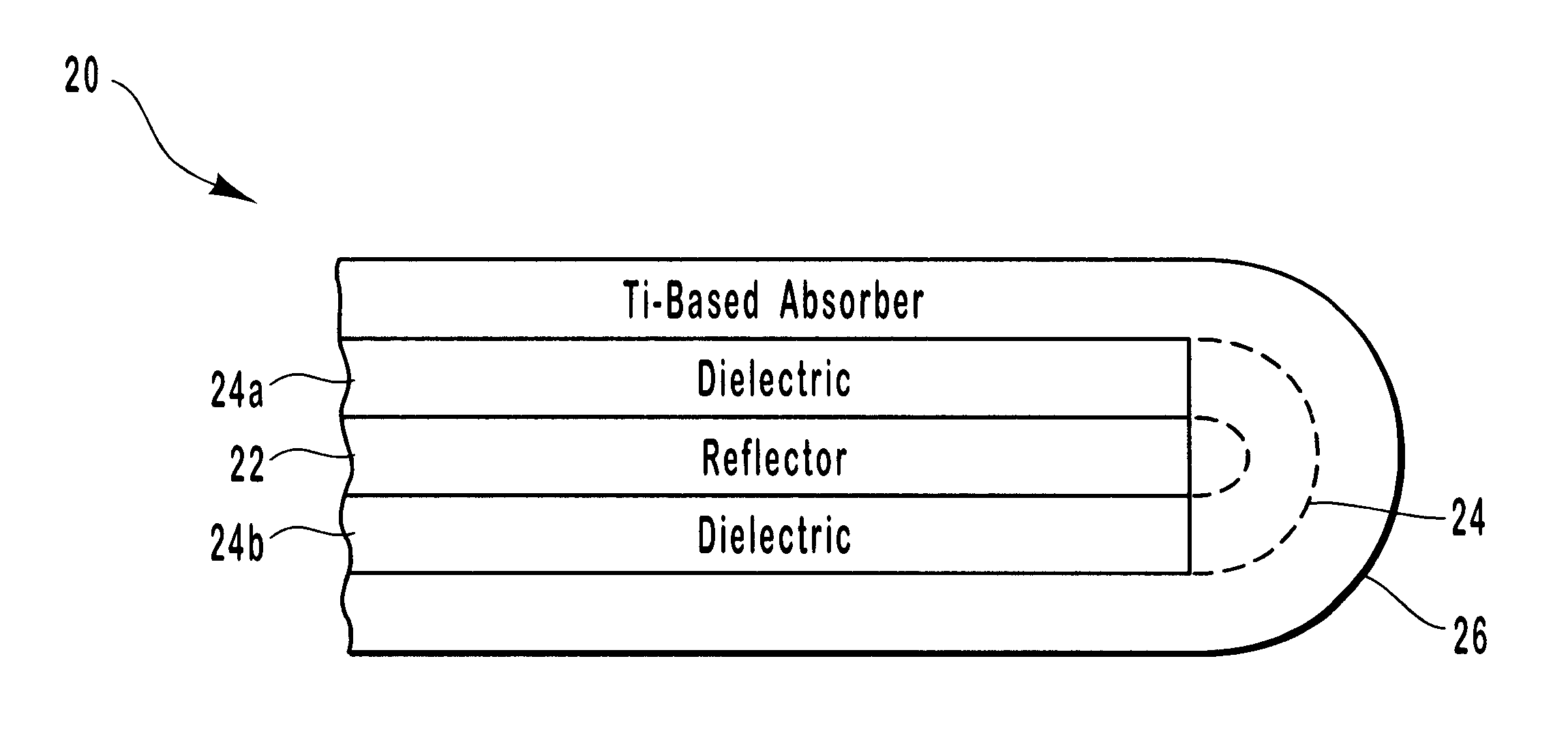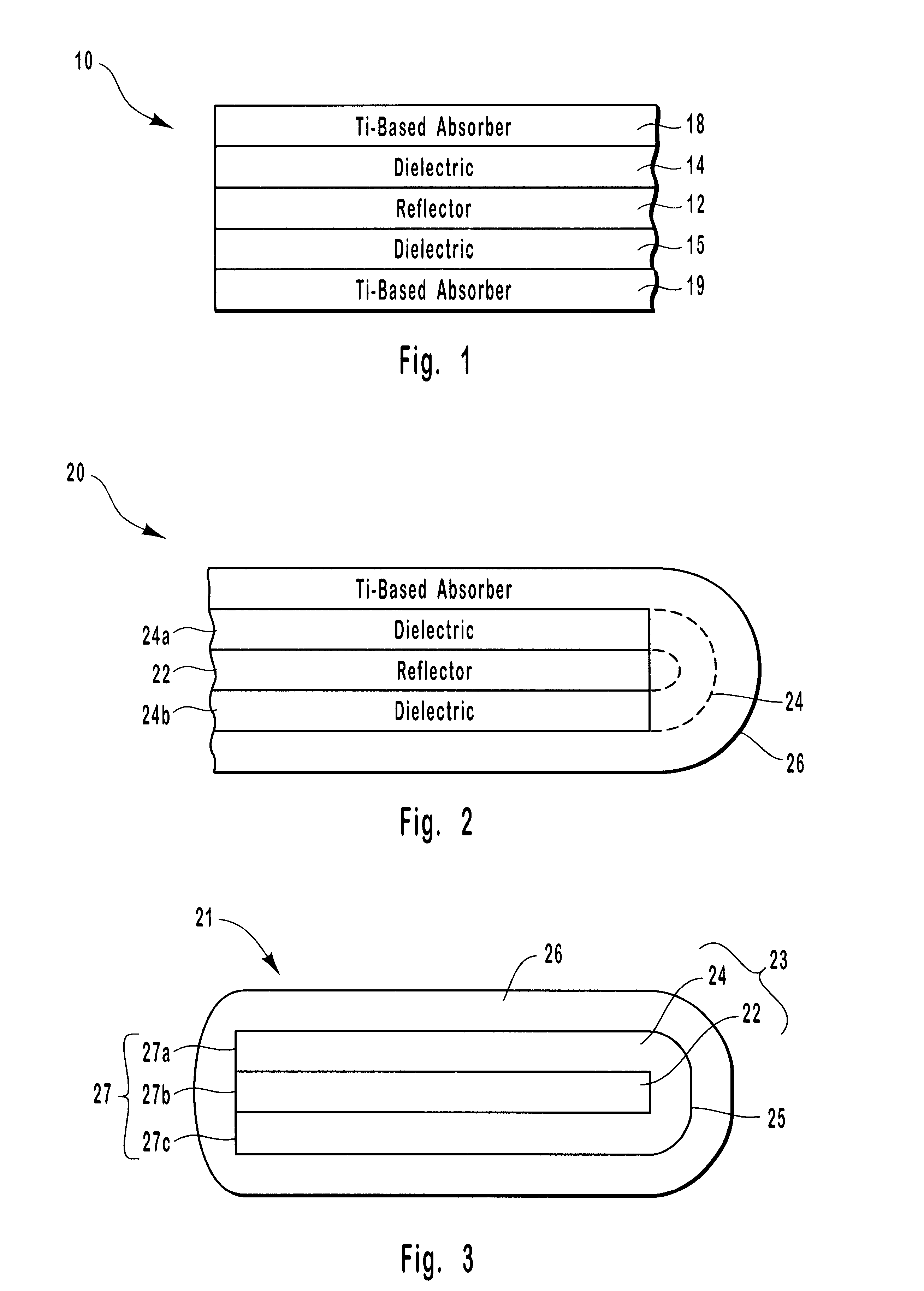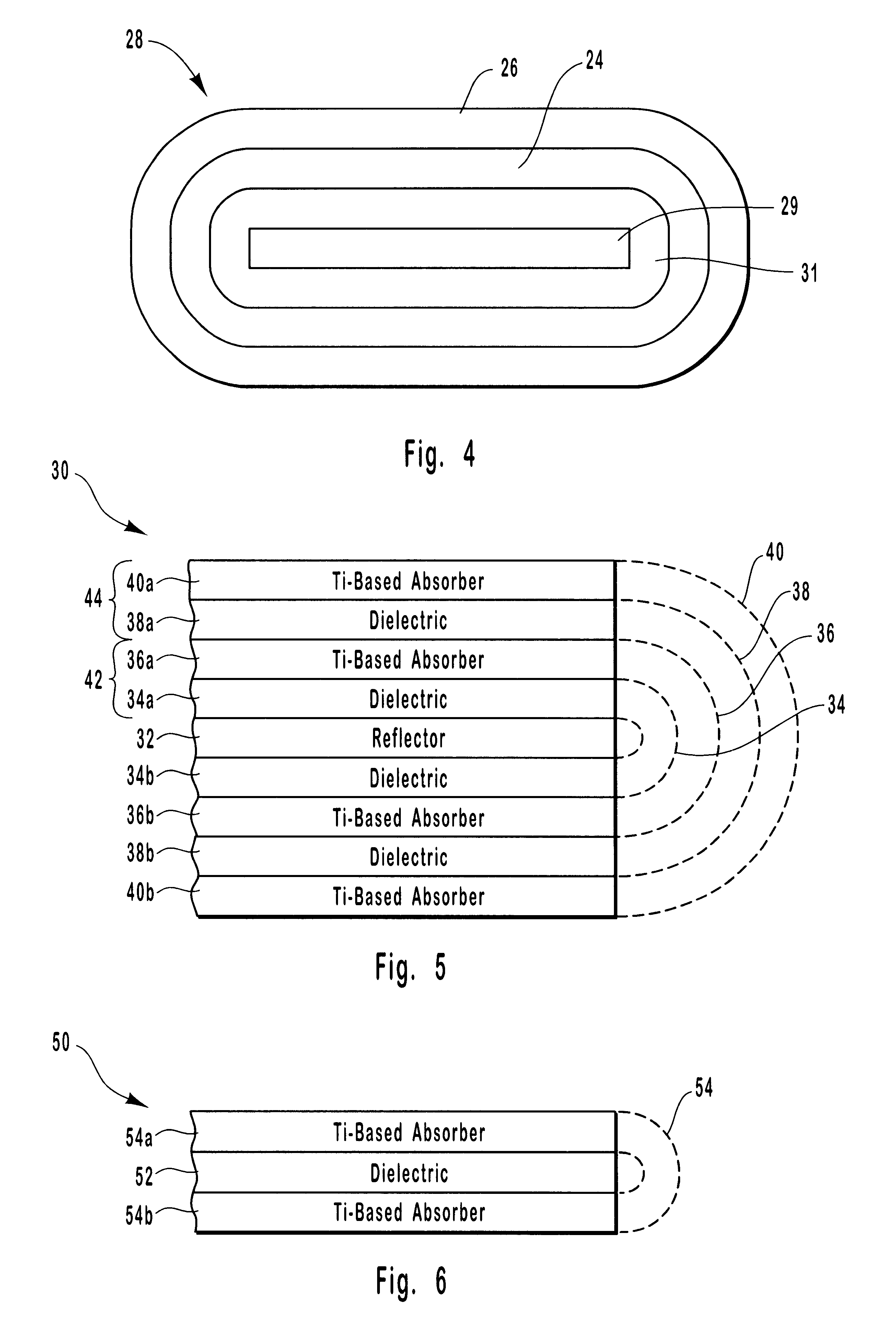Titanium-containing interference pigments and foils with color shifting properties
a technology of interference pigments and pigments, which is applied in the field of interference pigments and foils, can solve the problems of not generating the best chromatic colors, relatively thick coatings, and only obtaining continuous coatings at the expense, and achieves a wide range of color shifting properties, high chroma, and durable paints. high chroma
- Summary
- Abstract
- Description
- Claims
- Application Information
AI Technical Summary
Benefits of technology
Problems solved by technology
Method used
Image
Examples
example 1
Theoretical modeling was performed using conventional optical design software to analyze thin film stacks having the following multilayer structure:
absorber / SiO.sub.2 (4 QW) / Al(800 .ANG.) / SiO.sub.2 (4 QW) / absorber.
The dielectric SiO.sub.2 layer optical thickness varied from 4 quarter waves (QW) at 350 nm to 4 QW at 800 nm. FIGS. 13 and 14 are graphs showing theoretical chromaticity plots based on the theoretical modeling of this multilayer structure. In general, the graphs of FIGS. 13 and 14 show that based on theoretical modeling, this thin film stack structure with various absorber materials at varying thicknesses will produce a high chroma.
In particular, FIG. 13 shows the theoretical plots of a*, b*, where the chroma is defined as C*=(a*.sup.2 +b*.sup.2), i.e., the chroma value is a vector starting from the origin. The further out from the origin, the larger the chroma value. FIG. 13 shows the plots for various absorbers, including 55.ANG. of Cr as an absorber, 90 .ANG. of graphi...
example 2
A color shifting powdered pigment according to the present invention was produced by coating a sol-gel based powder material with titanium nitride. The sol-gel material was composed of particles with the structure SiO.sub.2 / BMF / SiO.sub.2, where the SiO.sub.2 was formed from tetraethoxysilane (TEOS). The BMF material was formed on a release layer of a web in a roll coater as SiOx / Al / SiOx and removed by dissolving the release layer. Following removal of the BMF material from the web, the material was ground to about 30 cm. The BMF material was then reacted in a stirred reactor with IPA / water, ammonia and TEOS. The TEOS was reactively decomposed to form SiO.sub.2 onto the surfaces of the SiOx. The thickness of the SiO.sub.2 can be adjusted as desired to form the appropriate color shift. The sol-gel material was then dried and calcined at 500.degree. C.
The sol-gel material in an amount of 240 grams was then loaded into a particle vacuum coater having vibrating trays which held the sol-...
example 3
A color shifting powdered pigment according to the present invention was produced by coating a sol-gel based powder material with titanium and carbon. The sol-gel material was composed of particles with the structure SiO.sub.2 / BMF / SiO.sub.2, which were produced by the same procedure as described above for the sol-gel material in Example 1.
The sol-gel material in an amount of 380 grams was then loaded into a particle vacuum coater having vibrating trays which held the sol-gel particles. The particle vacuum chamber was pumped down to a pressure of 2.times.10.sup.-5 torr. The vibrating trays were turned on prior to the pump-down so that entrapped air would not suddenly erupt and cause powder to stream out into the chamber. The chamber pressure was maintained at 2.times.10.sup.-3 torr with the addition of argon. Two titanium targets were energized at 5 kW and one carbon target was powered at 6 kW. The sol-gel particles moved consecutively under the two titanium targets and then under t...
PUM
| Property | Measurement | Unit |
|---|---|---|
| physical thickness | aaaaa | aaaaa |
| optical thickness | aaaaa | aaaaa |
| optical thickness | aaaaa | aaaaa |
Abstract
Description
Claims
Application Information
 Login to View More
Login to View More - R&D
- Intellectual Property
- Life Sciences
- Materials
- Tech Scout
- Unparalleled Data Quality
- Higher Quality Content
- 60% Fewer Hallucinations
Browse by: Latest US Patents, China's latest patents, Technical Efficacy Thesaurus, Application Domain, Technology Topic, Popular Technical Reports.
© 2025 PatSnap. All rights reserved.Legal|Privacy policy|Modern Slavery Act Transparency Statement|Sitemap|About US| Contact US: help@patsnap.com



